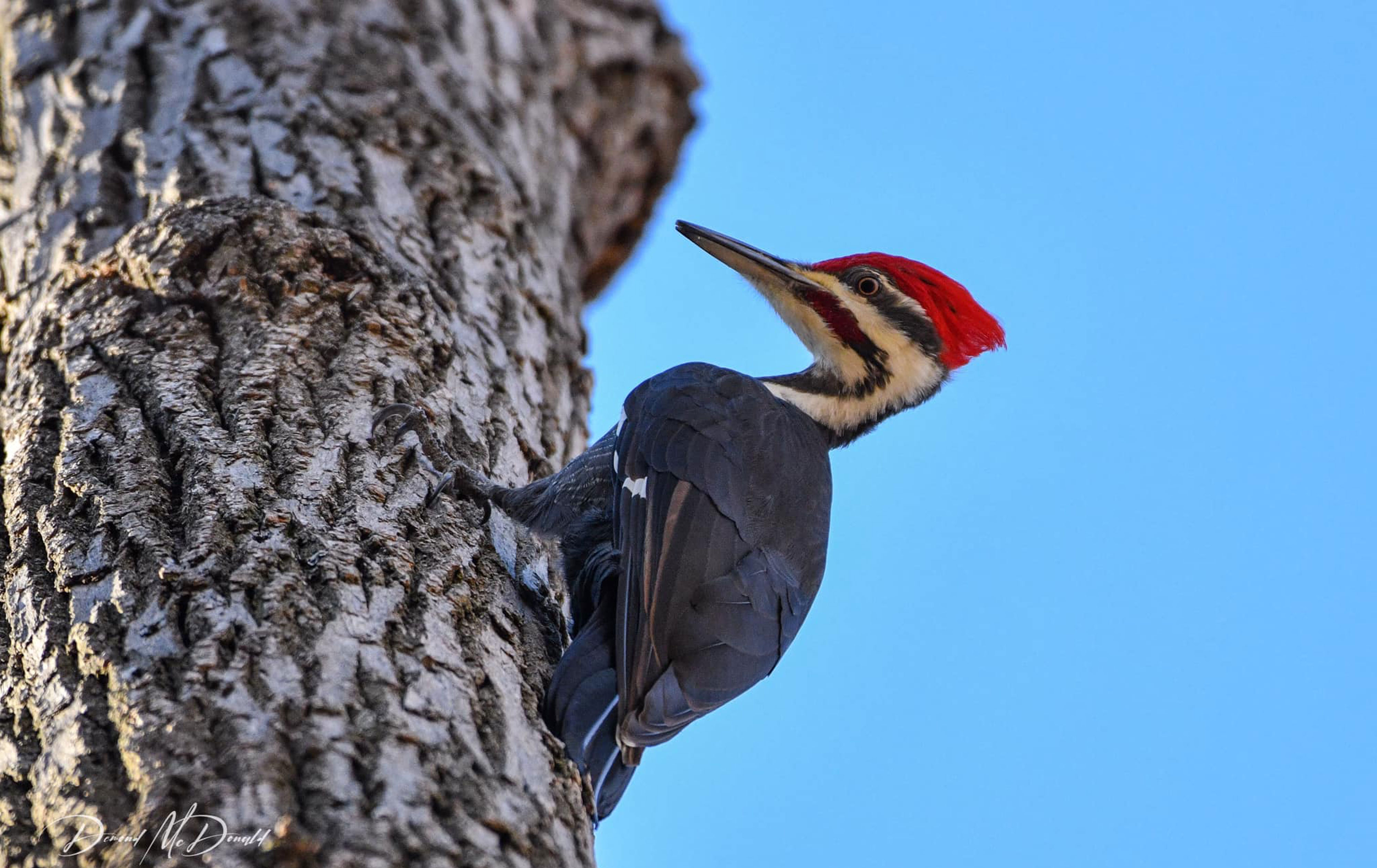Woodpeckers in Florida: Nature, Ecology, and Conservation
Woodpeckers in Florida: Nature, Ecology, and Conservation
Blog Article
Woodpeckers Unleashed: Exploring the Wonders of These Knowledgeable Tree Climbers
Woodpeckers, with their distinctive markings and balanced drumming echoing through wooded areas, hold an unique location in the avian globe. Their specialized makeup and adaptations allow them to navigate upright surface areas with unmatched skill. Their mastery of tree climbing is simply one facet of their interesting behavior. As we look into the complex information of woodpeckers' nesting routines, feeding strategies, and the recurring preservation efforts to shield these remarkable birds, a much deeper admiration for their place in nature unravels.
Composition and Adaptations
When analyzing the composition and adjustments of woodpeckers, one can observe amazing features that make it possible for these birds to prosper in their specialized eco-friendly particular niche. Furthermore, woodpeckers have zygodactyl feet, with two toes dealing with forward and two facing in reverse, giving a company hold on tree trunks while they browse for food or drum for interaction.
In addition, woodpeckers have an unique tongue framework that is long, barbed, and sticky, allowing them to extract pests from gaps in timber. This specialized adaptation enables woodpeckers to manipulate a food source that is hard to reach to many other bird varieties. Generally, the composition and adjustments of woodpeckers showcase the exceptional evolutionary remedies that have enabled these birds to thrive in their arboreal habitat.
Drumming Behavior
Having checked out the anatomy and adjustments of woodpeckers, the focus currently shifts to comprehending their drumming habits, a distinctive facet of their interaction and territorial displays. Drumming is a crucial type of interaction among woodpeckers, offering numerous purposes such as developing territories, drawing in mates, and signaling alarm system. Each woodpecker species has an one-of-a-kind drumming pattern that helps people acknowledge members of their very own varieties and differentiate them from rivals or predators.
Woodpeckers create drumming noises by swiftly pecking on powerful surfaces such as dead trees, energy posts, or perhaps steel objects, producing a collection of rhythmic beats. The strength and rate of drumming can vary based on the purpose; for instance, a fast drumming series may symbolize aggressiveness towards intruders, while a slower and softer drumming pattern can show courtship (Woodpeckers in Florida). Additionally, woodpeckers may adjust the frequency and period of their drumming to communicate details messages successfully
Nesting Practices
Exploring the nesting routines of woodpeckers exposes remarkable understandings into their reproductive habits and environment choices. Woodpeckers are understood for their one-of-a-kind nesting choices, usually excavating tooth cavities in trees to create protected rooms for raising their young. These dental caries offer not just as a nesting site but also as a safe and secure sanctuary from predators and harsh weather condition.
Woodpeckers show a high degree of fidelity to their nesting websites, usually going back to the same place every year. This behavior highlights the significance of ideal habitat accessibility for their reproductive success. The option of a nesting website is essential for woodpeckers, with aspects such as tree species, elevation, and degeneration stage playing substantial functions in their decision-making process.
Interestingly, some woodpecker species are recognized to dig deep into several cavities within their area, offering themselves with different nesting alternatives. This strategy might function as a kind of insurance versus prospective threats or disruptions to their primary nesting site.

Feeding Methods
Woodpeckers utilize a range of specialized feeding techniques to obtain their primary food resources. Among the most distinct feeding habits of woodpeckers is drumming, which entails fast pecking on trees to uncover pests underneath the bark. This drumming not just aids them locate victim but likewise works as a means of interaction with various other woodpeckers. Woodpeckers have solid, chisel-like beaks that allow them to drill into timber effortlessly. When a hole is produced, they utilize their long, barbed tongues to draw out insects such as view ants, beetles, larvae, and spiders. These tongues are covered with sticky saliva that aids catch the target. Woodpeckers are also recognized to dig deep into dental caries in trees to accessibility hidden insect larvae or sap. Some types, like the acorn woodpecker, store nuts in specifically developed holes called granaries. This strategic keeping of food helps them survive during food scarcity periods. Woodpeckers are truly impressive in their feeding strategies, showcasing adaptability and intelligence in acquiring their nutrition.
Preservation Efforts
In the middle of the intricate feeding methods exhibited by woodpeckers, the preservation initiatives intended at protecting these remarkable birds play an essential duty in protecting their habitats and populations. Woodpeckers encounter numerous risks to their survival, including habitat loss due to deforestation, climate modification altering their ecosystems, and collisions with synthetic frameworks such as buildings and vehicles - Woodpeckers in Florida. Guardians are proactively functioning to attend to these obstacles and make sure the long-lasting wellness of woodpecker site here types

Education and public awareness campaigns are also important elements of woodpecker conservation efforts. By raising awareness regarding the relevance of these birds in preserving healthy forest ecological communities, guardians can amass assistance for environment conservation efforts and promote liable land monitoring techniques. Through collaborative efforts between scientists, policymakers, and neighborhood areas, we can work together to secure a future where woodpeckers flourish in their natural environments.
Final Thought
)
Report this page